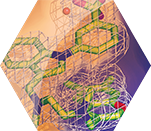
Cambridge Healthtech Institute’s Inaugural
Protein-Protein Interactions
Small Molecule Discovery for Difficult Drug Targets
4 - 5 DECEMBER 2024
Protein-protein interactions (PPIs) as drug targets are disease-relevant complexes of proteins bound to one another, and sometimes to DNA or RNA as well. PPIs are difficult for medicinal chemists to design or discover drugs against because there is no enzymatic site to inhibit. Furthermore, the PPIs usually have flat interaction surfaces making it harder for small molecules to bind the PPIs. At CHI's Protein-Protein Interactions conference join a global community of medicinal, biophysical and structural chemists to share insights, successes and lessons learned from working on these hard-to-drug targets.